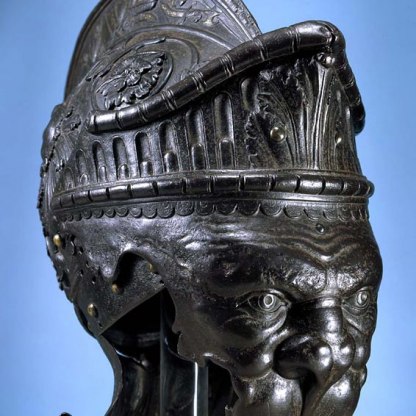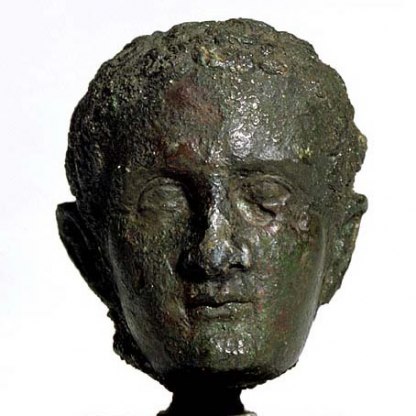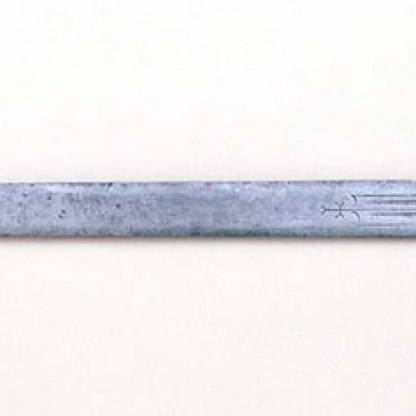Armour for Horse and Man

Although its various parts were not originally made to go together, this imposing ensemble illustrates excellently the kind of ‘panoply’ produced in the last great period of European armour manufacture.
A suit of armour was not only intended to protect its wearer from missiles, swords or hammer blows - although the kind of steel plate manufactured in Italy and Germany in the sixteenth century did this job admirably. Armour such as this drew attention to one’s social status, one’s fashion-consciousness and, by virtue of its great cost, one’s wealth. This was never more true than in Germany in the sixteenth century when full armour was worn at political meetings, weddings and civic ceremonies.
The distinctive decorative style of this rider’s armour is named after Maximilian I. A devotee of the joust, this Holy Roman Emperor was one of the most ‘armour-conscious’ rulers of the Renaissance. Left is a silver coin minted for him in 1509 which shows him fully armoured, riding on a warhorse [CM.82-1999]. So highly did Maximilian value the artistry of his armourer, Hans Grosschedel, that he raised him to the nobility, in much the same way as Charles V of Spain ennobled the painter Titian.
German armourers during Maximilian's reign, led by those of Augsburg and Nuremberg, closely followed changing styles in men's dress. Slender Gothic forms gave way to a heavier, rounder look. The feet were no longer protected by pointed solerets, but by flat-toed sabatons. And, most distinctly of all, fluted patterns became popular, which imitated the pleats and tucks of contemporary clothing.
It was not only the coronation of Maximilian as Holy Roman Emperor that made the 1490s a busy decade for the arms manufacturers of Europe. In 1494 Charles VIII of France invaded Italy, provoking a series of European wars that were to last intermittently until 1559. The intensity of the fighting naturally called for a steady supply of protective steel.
If ownership of a plate mail suit implied wealth and status, then so did possession of a horse. The existence of specially made suits of horse's armour - called bards - shows just how highly valued the animals were by their sixteenth-century owners. There was an unwritten code of honour among cavalry fighters that one would not deliberately injure an opponent’s mount, whether on the battlefield or in the tournament. However horses were still vulnerable to bowmen, and protection from arrows was essential.
Themes and periods
Data from our collections database
Whole composite armour, for field or cavalry use, decorated with fluting in the Maximilian fashion. Consisting of an armet, a collar, a breast plate with skirt and tassets, a backplate with skirt, a pair of spaudlers and vambraces, a pair of gauntlets, a pair of cuisses and polyens, and a pair of greaves and sabatons.
Stated in the manuscript catalogues of the Stead Collection to have come from a Dresden collection.
Acquisition and important dates
- Method of acquisition: Given
- Dates: 1936-01-15
Dating
Maker(s)
- Unknown Production
Place(s) associated
- South Germany
Other highlight objects you might like
Suggested Curating Cambridge products
Sign up to our emails
Be the first to hear about our news, exhibitions, events and more…





